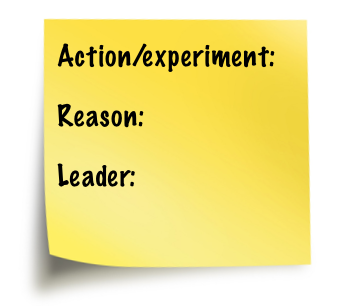
Lessons Learned from 100+ Retrospectives

There is a magical moment where a team gathers together to pause ‘business as usual’ and have a conversation to reflect on teamwork. It’s called a Retrospective. If done well, it helps to take a step forward. But a poorly held Retrospective is just another meeting that anyone barely wants to go to. Over time I have found the key characteristics of a good Retrospective:
Engaged participants
Time well spent
Meaningful focus
Clear actions defined
I’d like to share some principles that could increase your chances of enabling good conversations in a Retrospective.
Engaged participants
Being present is sometimes challenging. Notifications, e-mails and various distractions get in our way. Know your people. Enable their presence by playing with different techniques.
Building presence
Some groups need formal agreements like a ‘no device’ policy, others enjoy little check-in exercises like checking the current energy levels in the room or something more fun like sharing what animal would they be and why.
Finding the right format
Depending on the personality types and context you might want to consider different conversation starters. Do you want to unlock some creative potential or team needs to solve a well-known problem? Does your team like having a bit of fun or are they more serious? Does your team like randomness or consistency? Based on the answers you can choose a format that fits them.

Enabling inclusive participation
All team members are equally important. You’ll always have a mix of introverts and extroverts. The Retrospective is like music where the bass and treble must be well synced. If you’re a facilitator, create a space for everyone to speak. If you don’t have a facilitator, stick an A4 sheet on the wall with the question “Are we creating a space for everyone to speak?” This could serve as a reminder during the meeting.
Time well spent
Setting up expectations
You won’t solve all your problems during the Retrospective. Make that explicit. What you’re looking for are the key problems or opportunities. Keep in mind the Pareto principle and look for the 20% that could benefit the team the most.
Timeboxing
A solid Retrospective is like a good movie. Not too long, engaging and with some meaningful takeaways. Set expectations by sharing the timeboxes for different parts of the Retrospective at the beginning. The recipe that I use for a 60 min Retrospective is something around 5:20:30:5 (check-in, gathering thoughts, deciding what to do and check-out).
Meaningful focus
I’ve seen many facilitators struggling to move the conversation forward while having 50 posts-its to deal with. Distinguishing an essential few from the trivial many is key. Enable people to share an unlimited number of positive things, but put some healthy boundaries around sharing problems and issues. Make them think about what causes the most pain. There could be 99 problems in their minds, but only 2–3 that hurt the most. You want to focus on solving these.
As you build confidence within the team over time, you can open the door for the unlimited flood of post-its with problems and opportunities. When this happens, make sure that the key areas are identified and problems are clustered.
Clear actions defined
Discussing problems and challenges without coming up with actions leads to frustration. Conversations are great for building awareness, but you also need to find actions to move things forward. Focus on 2–5 actions that unlock the biggest opportunities. Make sure that the team builds momentum for improving their ways of working over time.
Template for the action items
Here’s my favorite template for Retrospective actions (image below).

Some of the actions will be experiments. You don’t know if they are going to work, but it’s your best guess.
Because we have a tendency to forget why we do what we do, write down the reason for action while the topic is still hot.
I don’t recommend assigning action items to individuals. Look for volunteers and find people who could lead the action. Leading doesn’t necessarily mean doing. It means making sure that the action is executed with or without collaboration with other team members. For example, for action to define the process for how to onboard new team members, the leader could be the one organizing the session and getting the right people in the room.
Conclusion
The tips I shared above are my personal experiences and learnings. Take it as a guidebook, not a set of rules. Find what works best for your team and iterate. Always look for feedback and aim to make things better. Experiment. Enabling the engine of continuous improvement is not an overnight process. It requires deliberate practice and effort. It’s a marathon, not a sprint. Create an environment for growth, not mayhem of problems. Be patient and enjoy the never-ending journey towards perfection.
What are your favorite Retrospective tips?